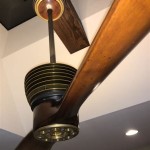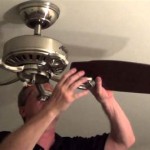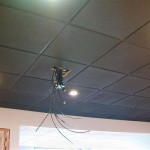Ceiling Fan Oil: What You Need to Know
Ceiling fans are a common and effective way to cool a home, especially during the summer months. To ensure optimal performance and a longer lifespan, it is essential to maintain them properly. One crucial aspect of maintenance is lubricating the motor with ceiling fan oil. This article will delve into the significance of ceiling fan oil, its benefits, and how to apply it effectively.
The Importance of Ceiling Fan Oil
Ceiling fan motors are intricate mechanisms with moving parts that require lubrication to function smoothly. Over time, the grease and oil within the motor can dry out, leading to friction, increased wear and tear, and ultimately, motor failure. Ceiling fan oil acts as a lubricant, reducing friction between moving parts, minimizing noise, and extending the life of the motor.
Applying ceiling fan oil regularly prevents the buildup of dust and debris, which can clog the motor and hinder its performance. A well-lubricated motor operates more efficiently, requiring less energy and saving you money on your electricity bills.
Types of Ceiling Fan Oil
Not all oils are created equal when it comes to ceiling fans. Some oils are specifically formulated for this purpose, while others can damage the motor or attract dust and dirt. The best type of oil for your fan depends on its age and the type of motor it uses. Here are the common types:
- Silicone oil is a popular choice for ceiling fans as it repels dust and dirt, has excellent lubricating properties, and is generally safe for most motor types.
- Light oil is a lightweight oil that is suitable for older fans and motors. It is less viscous than silicone oil, allowing for easier penetration into the motor components.
- Synthetic oil is a high-performance oil that is designed for demanding applications. It is more expensive than other types of oil but offers excellent lubrication and protection for your fan.
Avoid using general-purpose oils, such as motor oil or WD-40, as they can attract dust and dirt, causing more harm than good to your ceiling fan.
Applying Ceiling Fan Oil
Applying ceiling fan oil is a relatively straightforward process, but it is important to follow the right steps to avoid damaging your fan or yourself. Here is a step-by-step guide:
- Turn off the power to the ceiling fan at the circuit breaker. Never attempt to lubricate a fan while it is running.
- Remove the fan blades using a screwdriver. Depending on your fan model, you may need to remove the light kit first. Be sure to place the blades in a safe place.
- Locate the oil ports on the motor. These are usually small holes or slots on the side of the motor. It's helpful to consult your fan's manual for their exact location.
- Apply a few drops of oil to each port, using a small oil can or syringe. Avoid over-oiling, as this can attract dust and dirt.
- Run the fan for a few minutes to allow the oil to distribute evenly.
- Replace the blades and light kit (if applicable), making sure they are securely fastened.
- Turn the power back on to the fan and test its functionality. If you hear any unusual noises, stop the fan and re-check the lubrication.
It is recommended to oil your ceiling fan every 3 to 6 months, depending on the frequency of usage and environmental conditions. If you live in a dusty environment, more frequent lubrication may be necessary
Additional Tips for Ceiling Fan Maintenance
Beyond oiling, there are other maintenance tasks you can perform to ensure your ceiling fan operates smoothly and efficiently. These include:
- Dust the blades with a soft cloth or feather duster.
- Inspect the fan blades for any cracks, damage, or imbalance.
- Check the mounting screws to ensure they are secure.
- Clean the light fixture, removing dust and debris.
- Replace the fan's capacitor if it is showing signs of wear or failure.
Regular maintenance will help you enjoy the benefits of your ceiling fan for years to come.

Homemade Italian Meatballs

Secret Ingredient Italian Meatballs A Simple Palate

Italian Meatballs Rocky Hedge Farm

Italian Style Slow Cooker Meatballs

Juicy Baked Italian Meatball Recipe

Juicy Meatball Recipe How To Cook Italian Meatballs

Italian Meatballs
:max_bytes(150000):strip_icc()/220854-chef-johns-italian-meatballs-DDMFS-beauty-4x3-BG-31732-f527165240e34fb081a5290e47d580d0.jpg?strip=all)
Chef John S Italian Meatballs

Kate S Best Italian Spaghetti And Meatballs Recipe Katesbestrecipes Com

Air Fryer Meatballs
Related Posts








